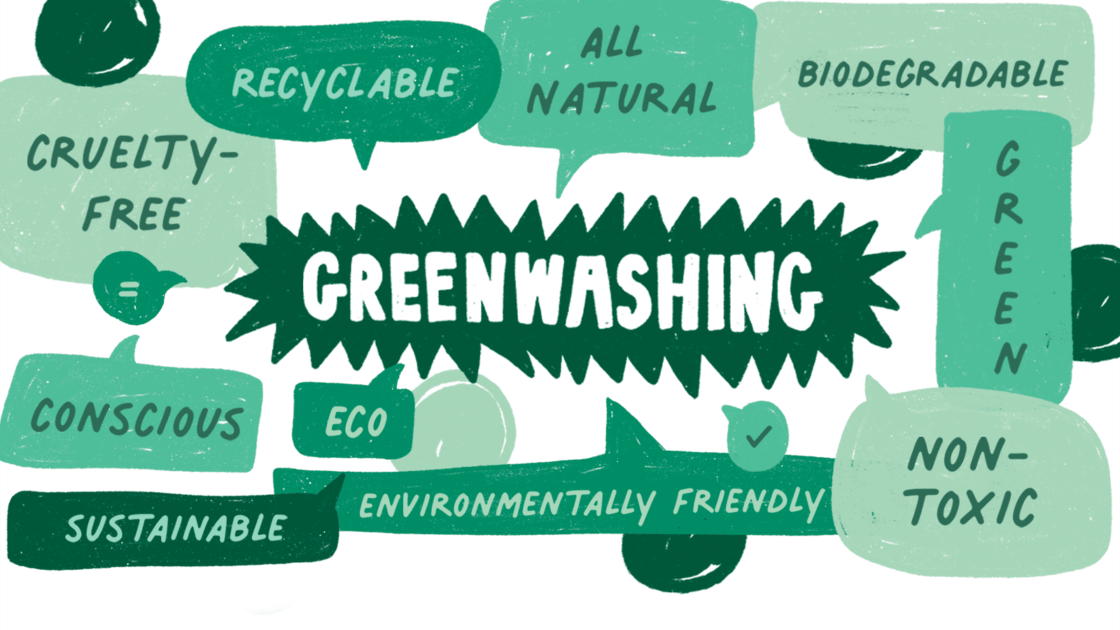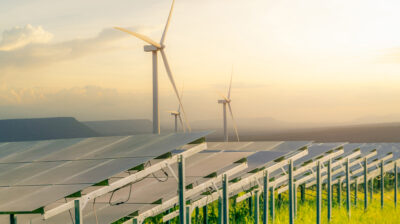How to tell if a company is greenwashing
As it grows more difficult to recognise what greenwashing is, learn how you can spot it when buying your next item.


As companies adopt increasingly clever marketing techniques, it can be difficult to recognise greenwashing for what it is.
What is greenwashing?
Greenwashing is a marketing technique used to give the impression that a company’s products, practices and policies are more environmentally-friendly than they actually are. People are now more aware of the damage that some industries do to our environment and so greenwashing is used to persuade customers to buy a product or service by suggesting that doing so will help the environment.
This can be misleading, as things that might seem environmentally friendly can have a hidden cost to the environment that we’re not aware of. The practice of greenwashing is not new but it has become more common and harder to recognise.
Read in more detail about greenwashing
How to tell if it’s greenwashing or actually sustainable
There are a few points to keep in mind when trying to distinguish between greenwashing and truly responsible practices.
Key Greenwashing practices to watch out for:
- Sustainable ranges alongside usual products
- Using ‘eco-friendly’, ‘sustainable’ or ‘green’ buzzwords without evidence of sustainability on one singular aspect of the business
- Avoiding systemic issues by focusing on one feature of their products or practices while ignoring more important environmental issues
- Stating energy efficiency, which is often just meeting regulatory standards
- Using false environmental certification labels
- Stating misleading claims and targets, like claiming to have cut emissions on making a certain product while ramping up production overall
- Paying a minimum wage to workers rather than a living wage
- Green initiatives at the head office but no mention of improving the supply chain
Environmental certification labels
Companies may create their own ‘sustainable’ label and use a similar look to environmental certification labels to mislead a customer.
Familiarise yourself with existing environmental certification labels so that you will be able to tell the difference between the real and the fake ones. Some examples of environmental certification labels include:
- Global Organic Textile Standard (GOTS)
- EU Ecolabel
- Sustainable Agricultural Network
- Leaping Bunny
- Marine Stewardship Council
- Fairtrade
Do your research
If a brand is making a claim, look for the evidence that backs it up. Information about a brand’s sustainability should be easy to find on their website, and easy to read. If they say they work with organisations or bodies that boost their sustainability, check to see if you can verify it on the other organisation’s website. If they say they are carbon neutral, look into whether that means the whole company, or just a few products.
If they claim a particular material is sustainable (for example, bamboo), look it up to make sure it is actually better for the environment (in many cases, bamboo can be more harmful for the environment).
Good On You is a great website and app that gives brands sustainability ratings based on their treatment of people, the planet, animals and their transparency.
Consider the cost of making items
Although it’s great to find sustainable products at affordable prices, it is worth looking into it more before trusting their claims that it’s environmentally friendly. For example, if a new item of clothing is being sold at a very low cost, it is unlikely that it is being made in a sustainable manner, unless it’s a non-profit company.
Sustainable materials are slightly more expensive, treating factory waste is expensive and treating employees well costs more too.
If a product says it’s sustainably made but made in a country well known for its low standard of working conditions like Bangladesh, China or India, there is a chance the people making the product are working in poor conditions for little money. Look for clear information on how the company treats its employees, if there is none it’s likely greenwashing.
If the item that you are buying has been mass-produced, it is less likely that it has been made in a sustainable manner.
Look for companies taking action right now
Find companies that are taking environmental action now, rather than making vague pledges to do so in the distant future (like promises to be carbon neutral by 2050 or labels that say not yet recycled). This shows that they really are committed to tackling the climate crisis and protecting the environment by investing money in these causes, rather than simply saying they will in the future.
Be kind to yourself
Truly sustainable companies are not always obvious or accessible. If you make a purchase from a company and discover that their environmental claims are false, try not to be annoyed with yourself about it. Let other people know their practices are not sustainable and get in touch with the company to inform them on how they could be helping people and the planet. Learn from the experience and remember that your best is good enough.
Read more about how to make more sustainable fashion choices.
Cover image by Cathy Hogan






